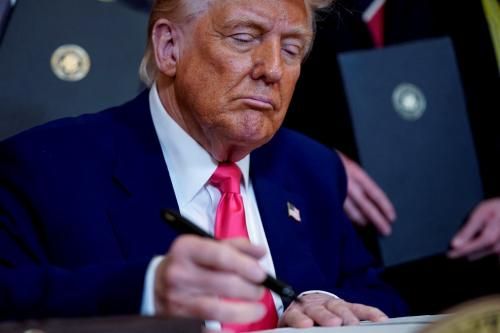Abstract
This paper describes in detail the theoretical and empirical features of the G-Cubed multi-country, multi-sector intertemporal general equilibrium model. The G-Cubed model has been used for a number of alternative policy simulations including the implications of greenhouse gas policy, trade liberalization, tax policy and macroeconomic policy. The paper is intended as a technical guide to supplement policy-oriented papers. It does not include a survey of related literature; for that or other additional detail, including computer code for the model and analysis of a variety of policy simulations, refer to McKibbin and Wilcoxen (1994) or contact the authors.
The Brookings Institution is committed to quality, independence, and impact.
We are supported by a diverse array of funders. In line with our values and policies, each Brookings publication represents the sole views of its author(s).




